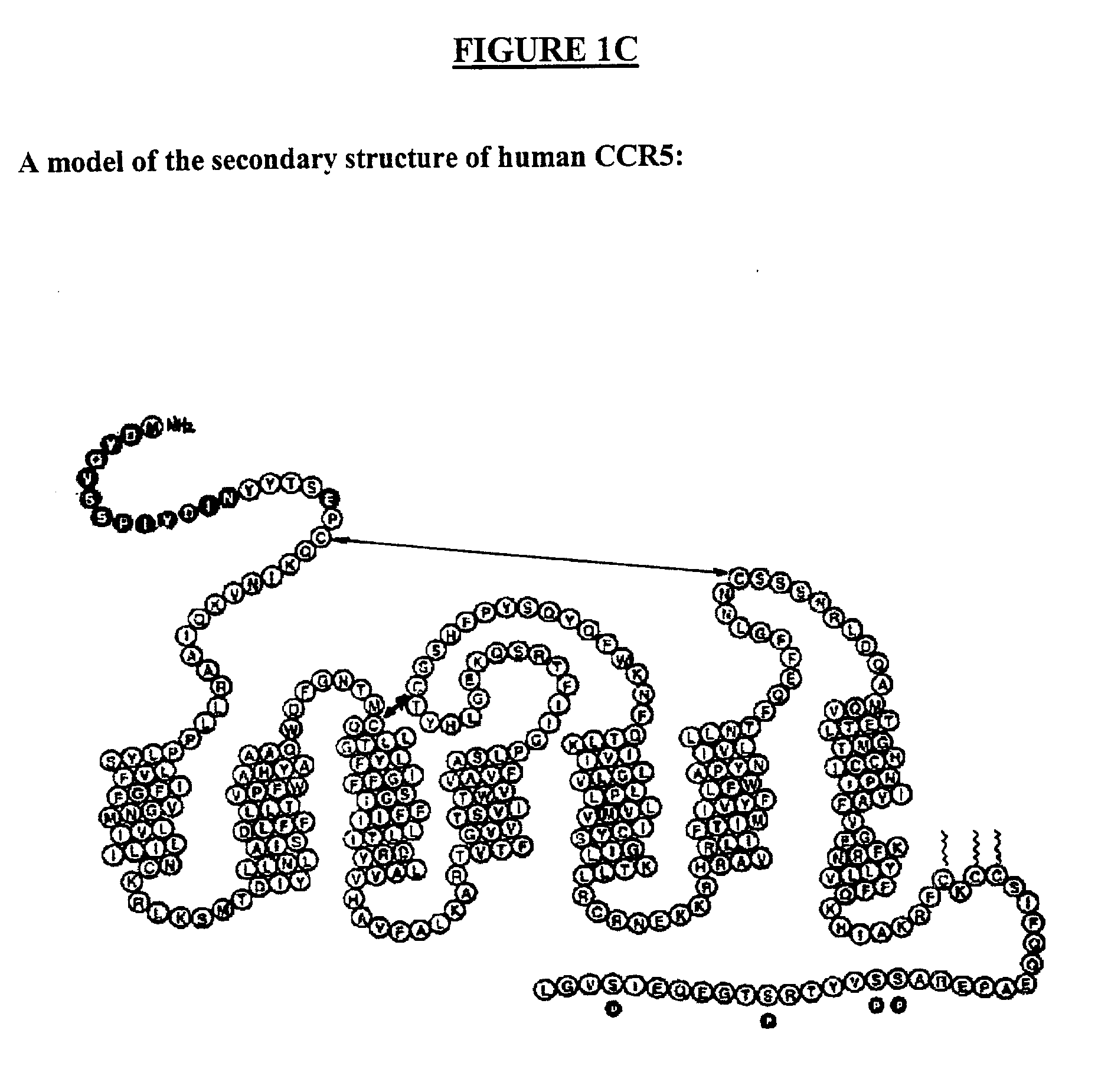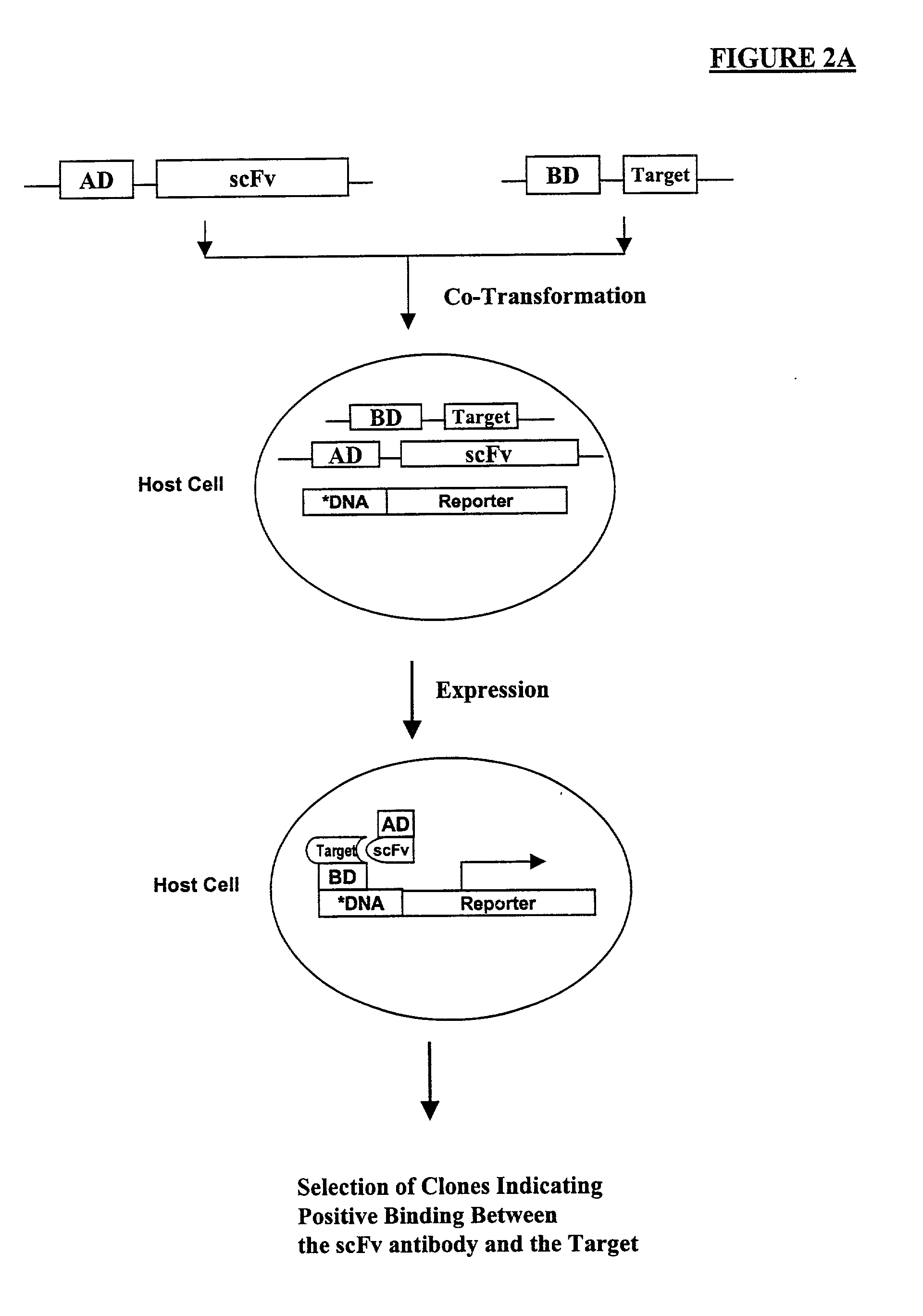High throughput generation of human monoclonal antibody against peptide fragments derived from membrane proteins
a technology of membrane proteins and monoclonal antibodies, which is applied in the direction of peptides, immunoglobulins against animals/humans, fungi, etc., can solve the problems of neoplastic growth, opportunistic infections, neurological diseases,
- Summary
- Abstract
- Description
- Claims
- Application Information
AI Technical Summary
Problems solved by technology
Method used
Image
Examples
Embodiment Construction
[0284] 1. Construction of Human Single Chain Antibody Library
[0285] A human scFv library was constructed in a yeast two-hybrid vector pACT2 that contains sequence encoding Gal4 activation domain (AD) (Li et al. (1994) "Specific association between the human DNA repair proteins XPA and ERCC1" Proc Natl Acad Sci USA. 91:5012-5016). cDNA encoding the variable regions of heavy (V.sub.H) and light chain (V.sub.L) were amplified by RT-PCR from poly A.sup.+ RNA of human spleen, bone marrow, fetal liver and peripheral blood leukocytes (PBL). The V.sub.H and V.sub.L cDNA fragments were linked by a linker encoding [(Gly).sub.4Ser].sub.4 (Nicholls et al. (1993) "An improved method for generating single-chain antibodies from hybridomas" J Immunol Methods 165:81-91), and are flanked by sequences of approximately 60 bp at each end that are homologous to the pACT2 multiple cloning sites (MCS) (Hua, et al, (1998) "Construction of a modular yeast two-hybrid cDNA library from human EST clones for the...
PUM
| Property | Measurement | Unit |
|---|---|---|
| dissociation constant | aaaaa | aaaaa |
| concentrations | aaaaa | aaaaa |
| concentrations | aaaaa | aaaaa |
Abstract
Description
Claims
Application Information
 Login to View More
Login to View More - R&D
- Intellectual Property
- Life Sciences
- Materials
- Tech Scout
- Unparalleled Data Quality
- Higher Quality Content
- 60% Fewer Hallucinations
Browse by: Latest US Patents, China's latest patents, Technical Efficacy Thesaurus, Application Domain, Technology Topic, Popular Technical Reports.
© 2025 PatSnap. All rights reserved.Legal|Privacy policy|Modern Slavery Act Transparency Statement|Sitemap|About US| Contact US: help@patsnap.com



